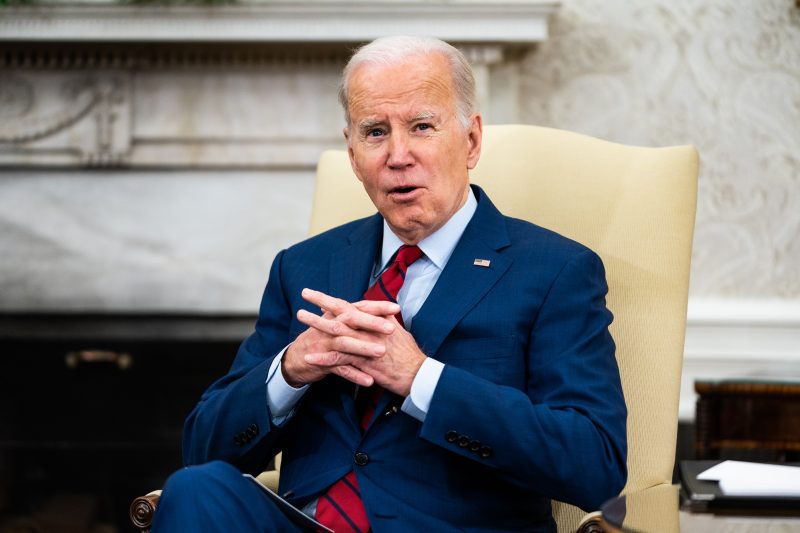
White House physician says small lesion removed from Biden’s chest was cancerous
President Biden had one cancerous skin lesion removed from his chest on Feb. 16, his longtime doctor Kevin C. O’Connor said in a letter Friday. O’Connor said that all cancerous tissue was successfully removed, and no further treatment is needed.
A biopsy confirmed that the small lesion was basal cell carcinoma, O’Connor said. The biopsy was performed on the same day as Biden’s annual physical.
Basal cell carcinoma, O’Connor explained, does not tend to spread or metastasize, as more-serious skin cancers, like melanoma, do. This type of carcinoma is the most common form of cancer diagnosed in the United States.
Per O’Connor, the area of the biopsy has healed nicely and Biden, 80, will continue to undergo dermatologic monitoring as part of his ongoing health care.
O’Connor noted at the time of Biden’s physical that he had several non-melanoma skin cancers removed before assuming the presidency.
After Biden’s physical exam in February, O’Connor said in a memo that the president remains “a healthy, vigorous, 80-year-old male who is fit to successfully execute duties of the presidency.”
At the time, O’Connor said the most notable update from Biden’s last physical in November 2021 was his coronavirus infection over the summer, but he said the president has not experienced any lingering symptoms that could be characterized as “long covid,” and noted that one “small lesion” on the president’s chest had been removed.
O’Connor noted in the February letter that Biden had spent a “good deal of time” in the sun when he was young.
Biden, the first octogenarian president in U.S. history, has faced repeated questions about his physical and mental fitness — inquiries that have intensified as he prepares for an expected reelection bid. He would be 82 at the start of a second term, and 86 at the end of eight years in the White House.
First lady Jill Biden underwent a similar procedure in January to have two cancerous skin lesions removed. All cancerous tissue was fully removed, as well, O’Connor said then. Basal cell carcinomas can be aggressive at the site, experts told The Washington Post at the time of the first lady’s procedure, but rarely pose a long-term issue if all cancerous tissue is removed.
Other presidents have contended with similar issues. Ronald Reagan had a growth removed from his nose in 1985, while he was president, that turned out to be basal cell carcinoma. His wife, Nancy Reagan, was diagnosed with the same form of cancer on her upper lip in 1982. She had it removed and needed no further treatment.
George H.W. Bush had basal cell carcinoma removed from his left cheek in 1986, while he was Reagan’s vice president.
Basal cell carcinomas most often occur as a result of sun damage or UV damage. They are more common in fair-skinned people who have less skin pigmentation, according to Mathew Avram, director of the Dermatology Laser and Cosmetic Center at Massachusetts General Hospital.
Ashwani Rajput, director of the Johns Hopkins Kimmel Cancer Center in Washington echoed O’Connor’s prognosis for Biden.
“The important thing is that [Biden] has had the right thing done, and there’s nothing to worry about.”
